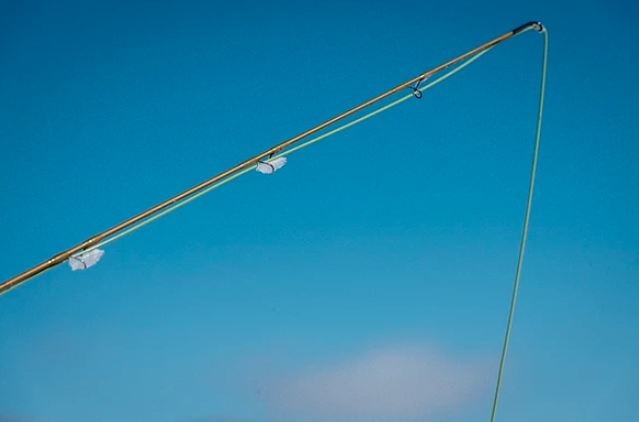
Credit: Rob Herrmann Photography
Winter fly fishing presents several challenges that anglers don’t face during the warmer months. Everything from head to toe will be cold, snow tends to buildup on your boots if you’re not wearing rubber soles and finding open water can be difficult. There are relatively easy solutions to all those problems but the one challenge that is a bit harder to overcome is freezing fly rod guides. Generally, if air temps are below 20 degrees, frozen guides are inevitable. Defrosting these guides is tedious and frustrating, but through that frustration, anglers have discovered unique methods for decreasing ice buildup.
Before we jump into the unique remedies, I first want to call out the most common and misguided solution that everyone should stop doing immediately. Do not break the ice off your guides with your fingers! We’ve all done it and yes, it gets the job done, but the odds of you breaking off your guide completely are way too high. Rather than risk breaking your rod, give one of these 7 easy solutions a try.
- Dip your rod in the water – This may sound counter intuitive, but the simple fact is, water temps are generally warmer than the air. So, if you stick your rod in the water for a few seconds, the ice on your guides should wash away. Once the ice is off, you can either shake your rod to remove excess moisture or take the more manual approach and wipe it dry with a shammy towel (you should have one of these anyways to dry off your hands). The most important thing to remember is not to submerge your reel in the water. Ice buildup in your reel is much harder problem to resolve.
- Ice Off Paste – Naturally, a couple fly fishing companies recognized this problem and attempted to develop a solution. Companies such as Loon Outdoors and Mucilin have developed a hard paste that will wick moisture from your guides. Like all these solutions, ice off paste will only prolong ice buildup and may need to be reapplied.
- Lip Balm – Considering most of us already carry some form of lip balm with us on the river, this is a simple and cost-effective solution. Like the ice off paste, rubbing lip balm on your guides will prevent rapid buildup of ice. Some anglers argue that the chemicals in traditional lip balm may have long term adverse effects on your fly line, so we recommend using a more natural product such as Burt’s Bees or Carmex. These two products are free from petroleum.
- Pam – Using Pam or generic cooking spray has become a popular solution to this problem. Spraying your guides with cooking spray will help wick moisture and decrease ice buildup. This is only a temporary fix, so if you want to reapply, you might have to leave one beer behind and be the guy on the river carrying a bottle of cooking spray.
- Pledge – We learned this trick from our friends at Anglers All. While it’s a similar concept to cooking spray, it appears Pledge will prevent ice longer. Before you hit the river, spray your rod with Pledge and wipe it down with a clean towel. Doing this will keep you ice free longer and give your rod a new shine finish. Click Here for the Anglers All instructional video.
- Rain X – This may sound aggressive and a bit more expensive, but if you really want to ensure water doesn’t bead up on your guides and freeze, Rain X might be the answer. This product is designed to wick moisture from a car, so ideally, it will be equally effective on your rod. The only risk here is the potential long term effects the chemicals may have on your line. Knowing this, it may make sense to reserve this solution for extreme temperatures.
- Tenkara – In reality, the most effective solution is the one that removes the problem all together. Tenkara rods don’t have guides and as a result, there is a zero percent chance of dealing with frozen guides. If the thought of dealing with frozen guides is enough to keep you off the water during the winter, consider giving Tenkara a shot.
